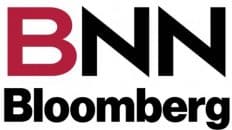Pick a message, any message. Or choose a card, any card because right now, finding out where short-term fossil fuel prices are headed is more like picking the winning lottery ticket.
Looking at the supply versus demand picture, where politics is not yet a measurable factor, prices should, I repeat, should be heading down.
The latest Energy Information Administration (EIA) report stated that there was a hefty 3.7 million-barrel draw on U.S. crude inventories, which makes sense as gasoline and distillate levels increased, which makes double sense as refineries were running at top speed averaging out at 94% capacity; and no wonder considering refining margins are double what they were at the start of the year.
Overall, when compared to the 5-year average, the supply side shows negative numbers for crude, gasoline, and distillates.
The big problem remains with distillates, which are down 13%, and the start of winter is still a month away.
The supply shortfall has been somewhat negated by a drop in demand for the entire family of refined products, which is no doubt due to consumer wariness about out-of-control inflation, and the “knock, knock who’s there?” potential recession.
There was a fear that the EU sanctions on Russian crude, and the price cap would force up prices.
Not so fast.
The EU sanctions take effect December 5, but the next OPEC supply and price huddle is on December 4. So, OPEC could just increase production to make up for the drop in Russian crude supply or, here’s the other card – OPEC could cut production to increase their revenue stream.
Prices may also continue to fall as we see the COVID-19 virus returning with a vengeance in China, forcing massive lockdowns. This should trigger a significant drop in crude oil demand and force Brent prices down.
Getting back to the domestic pricing situation. In the east, crude input prices are based on Brent crude. So, based on the above scenario, prices have no reason to increase. West of Thunder Bay, rack prices follow Western Canadian Select (WCS) price movements, and this is where good news, bad news messages come into play.
The good news is that the WCS discount off West Texas Intermediate (WTI) now sits at $27/bbl. The reason for this huge spread is because the product being drawn from the Strategic Petroleum Reserve (SPR), is high sulphur sour crude that is very similar to WCS. Gulf refiners are taking advantage of local supply from the SPR rather than pipeline in WCS from Alberta. In addition, the heavy sour WCS crude is more expensive to refine because it requires more high-cost natural gas to refine it.
While this is good news for gasoline and diesel consumers in the west, because the discounted WCS price will lower crude feedstock prices, it’s bad news for producers because WCS is out of favour and stuck in Alberta.
And these are messages Western Canadian producers would like to delete from their inboxes.
– Roger McKnight – B.Sc., Senior Petroleum Analyst








Add comment